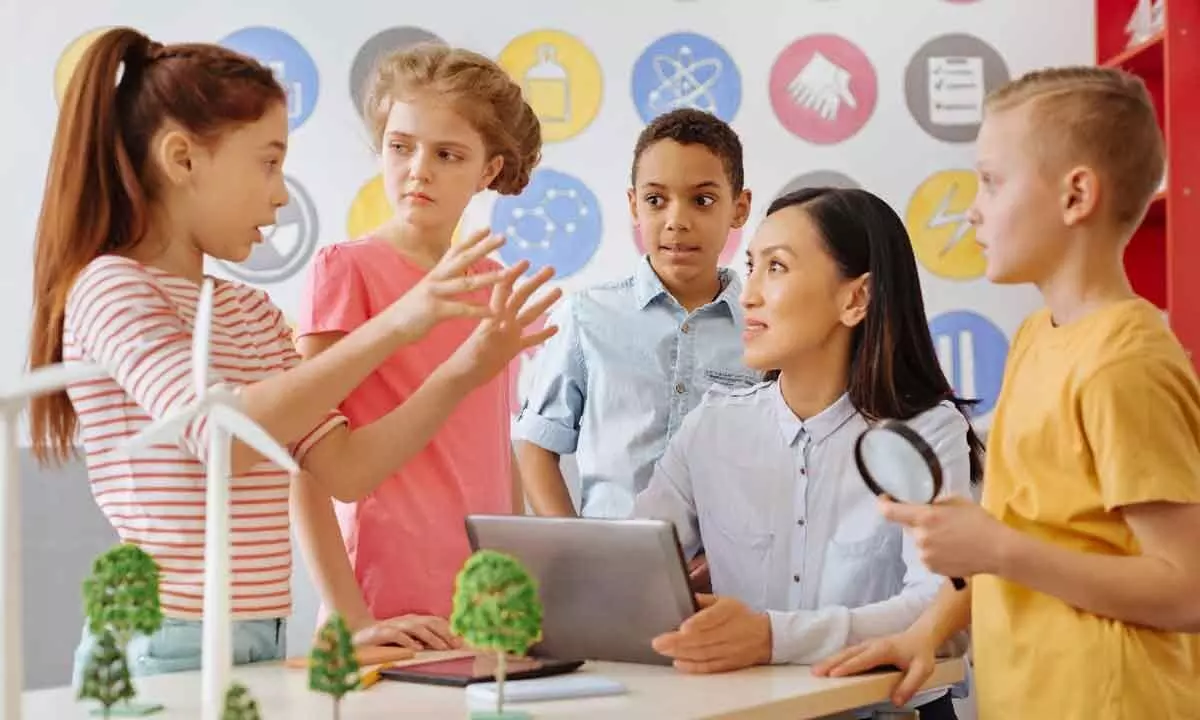Pandemic impact : 5 pragmatic approaches to effective learning

Just when we thought that it is curtains down on the struggles induced by the 3rd wave of the pandemic, it is once again uptick in several hotspots across the globe.
Just when we thought that it is curtains down on the struggles induced by the 3rd wave of the pandemic, it is once again uptick in several hotspots across the globe. A covid contained world is still a distant dream as the virus is something that we all need to learn to live with while exercising adequate precautions.
Although the news of 4th wave is a cause for concern, it should not halt the functioning of the Academia especially at the School Level. The virus has been a kill-joy for all, particularly for our youngsters and the crisis forced educational institutions to adopt digital technologies at break-neck speed.
As the world has now got accustomed to a masked life, education system also underwent a challenging and rapid transition phase. The closure of schools impacted the learning capabilities and behaviour of children. The monotonous online classes, with less or no interaction between their peers led to rise in anxiety and hyperactivity among children.
The learning loss due to Covid-19 is indisputable. Children across classes, especially lower grades have been highly impacted, with most children who are returning to school not ready in terms of expected abilities for further learning at the right class level. The worst hit of this lot is the kindergarten kids moving onto Grade 1 as there is huge learning gap. The transition for these students is challenging as they experience impaired reading and writing skills that need time to overcome.
Offline studies have no credible substitute. To bridge the learning gaps, the established practice of offline classroom peer learning needs to be conducted without disruption. Online classes and examinations have already disturbed the studies to a great extent.
Thus, we must look at a Five-point model with a pragmatic approach to incisively deal with this imminent issue:
1. One must look at the risk-benefit ratio. Given that majority of the children above 12 years are now vaccinated, they have a certain degree of protection against the virus.
2. Offline classes must be the first preference. Students should be encouraged to be inoculated to attend the classes as per prescribed norms under strict covid regulation compliance.
3. Shutting of schools should be the last resort only when situation worsens. We should not forget that child centric activities are possible only in school and are integral part of physical and mental development of the students. Moreover, during the last two years, online classes have adversely affected eyesight of the children due to over exposure to screens.
4. Possibility of online classes can be explored for only those students who are yet to be inoculated, in case of any sudden spike in cases
5. Remedial bridge courses must be ensured so that children do not fall behind. It is also important to address foundational skills of learning and reading with understanding.
Honing these will help the students have conceptual understanding across subjects and address the learning gap seriously. A comprehensive approach with structured revisionary policies is the need of the hour.
We must ensure that all stakeholders of the school community come together to address these concerns with stringent precautionary measures for seamless classroom learning so as to not allow it to fester our children's future. The Covid with its new variants will keep resurfacing in its new 'Avatar' every now and then. It is upon us and the educators to keep reminding the Parent & Student community on being relentlessly responsible, and follow the SMS (Sanitizer, Mask, Social distancing) religiously.
(The author is the Principal, Greenwood High International School)








